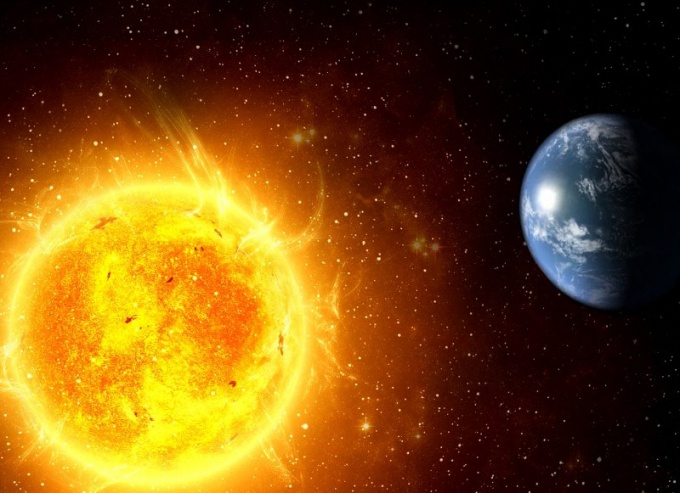Daily rotation of the Earth
For an observer in the Northern hemisphere, for example, in the European part of Russia, the Sun routinely rises in the East and rises to the South, occupying at noon is the highest position in the sky, then bends to the West and hidden behind a horizon line. The movement of the Sun is only visible and caused by the rotation of the Earth around its axis. If you look at the Earth from above in the direction of the North pole, it will rotate counterclockwise. The sun is at the place the appearance of motion created by the rotation of the Earth.
The annual rotation of the Earth
Around the Sun the Earth also rotates counterclockwise, if you look on top of the planet, from the North pole. Since the earth's axis is tilted relative to the plane of rotation, as the rotation of the Earth around the Sun, it illuminates it unevenly. One region gets more sunlight, than others. This changing of the seasons and changing length of day.
The spring and autumn equinox
Twice a year, March 21 and September 23 the Sun is equally lights up the Northern and southern hemispheres. These points are known as spring and autumn equinox. In March in the Northern hemisphere spring begins in the southern autumn. In September, on the contrary, in the Northern hemisphere autumn and the southern spring.
Summer and winter solstice
In the Northern hemisphere on 22 June the Sun only rises higher above the horizon. Day has the longest duration and the night of the day the shortest. The winter solstice occurs December 22 – the day has the shortest duration and the longest night. In the southern hemisphere the opposite is happening.
Polar night
Because of the tilt of the earth, the polar and Subpolar region of the Northern hemisphere in the winter months be without sunlight – the Sun never rises above the horizon. This phenomenon is known as polar night. Similar polar night exists for the Subpolar regions of the southern hemisphere, the difference between them is exactly six months.
What gives the Earth its orbit around the Sun
The planet can't rotate around their stars – otherwise they would just be drawn in and burned. The uniqueness of the Land lies in the fact that the inclination of its axis 23.44 on turned out to be optimal for the emergence of the variety of life on the planet.
Thanks to the tilt axis, the change of seasons, there are different climatic zones, contributing to the diversity of earth's flora and fauna. Change heating of earth's surface provides movement of air masses, and hence precipitation in the form of rain and snow.
The distance from the Earth to the Sun is 149 600 000 km has also been found optimal. A little further and the water on Earth was only in the form of ice. A little closer and the temperature was already too high. The very emergence of life on Earth and the variety of its forms has become possible thanks to the unique coincidence of so many factors.
